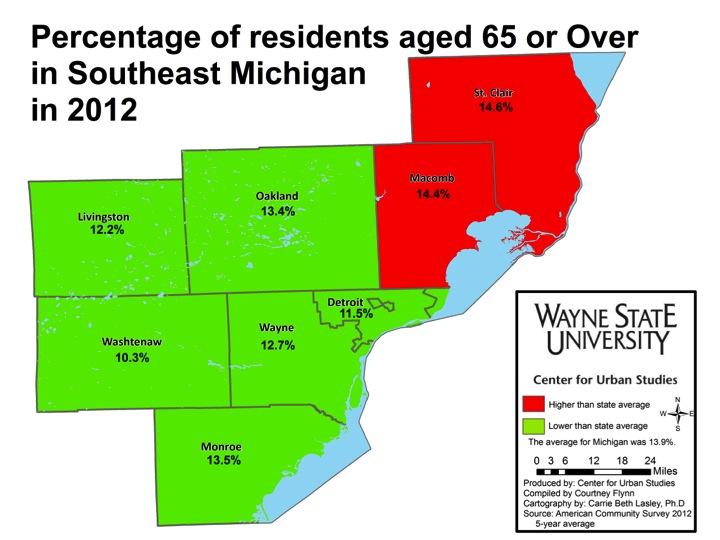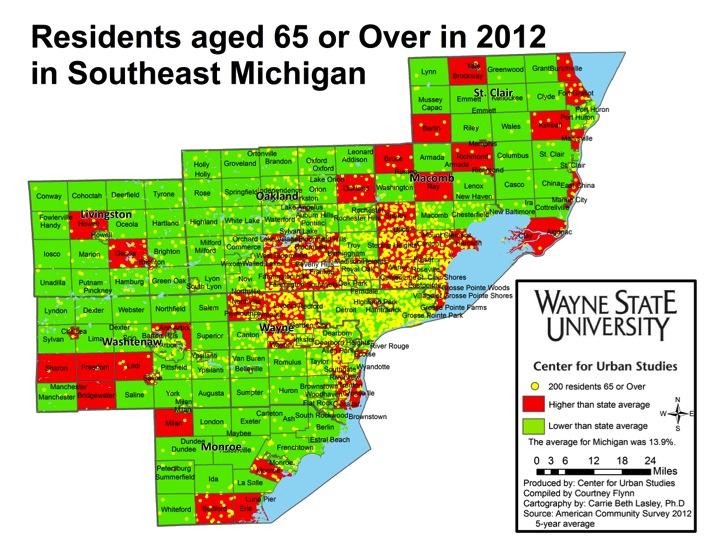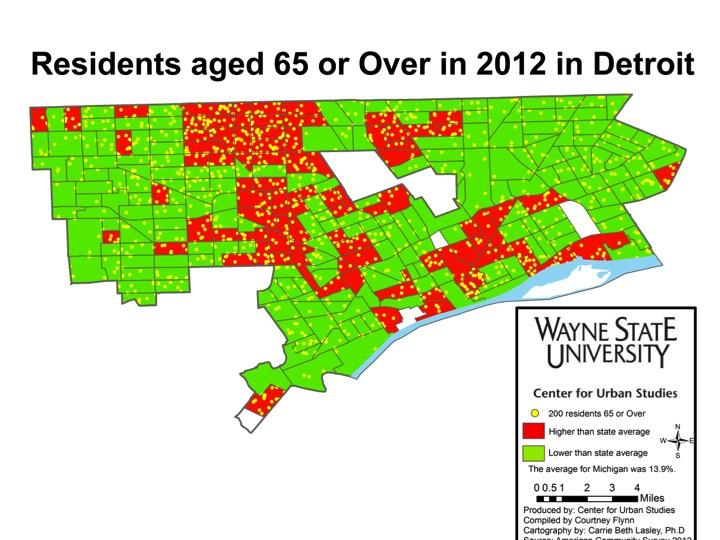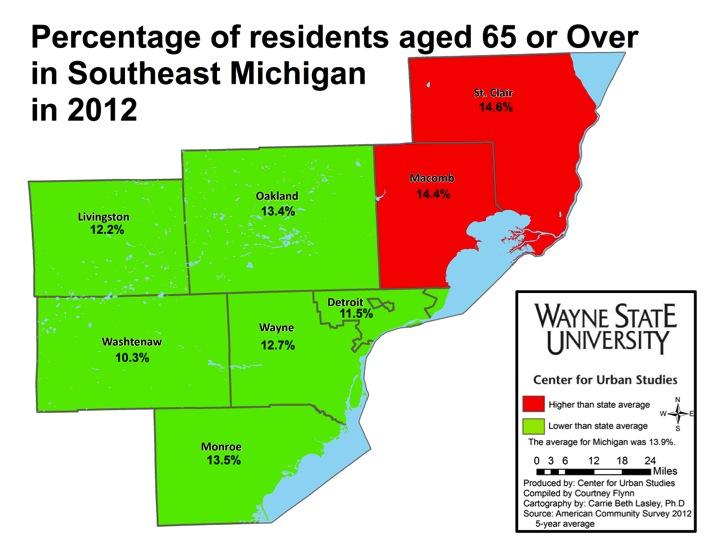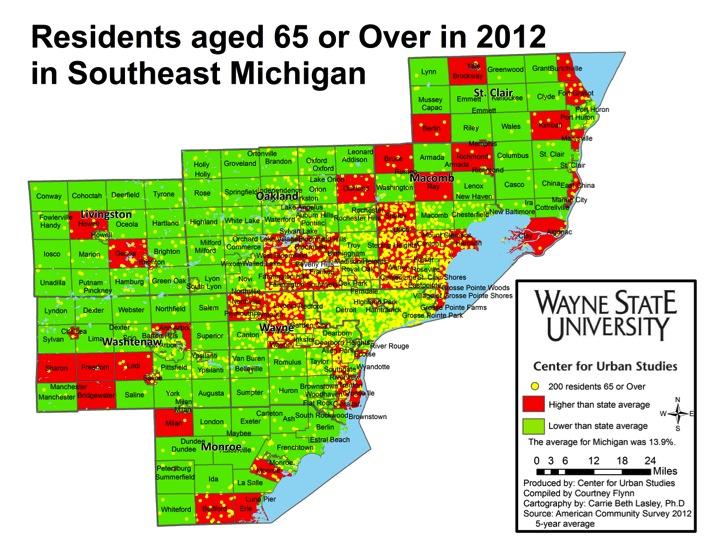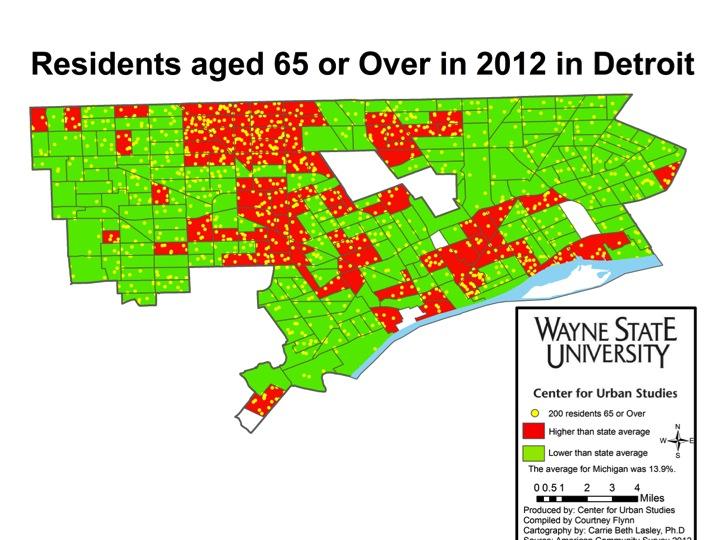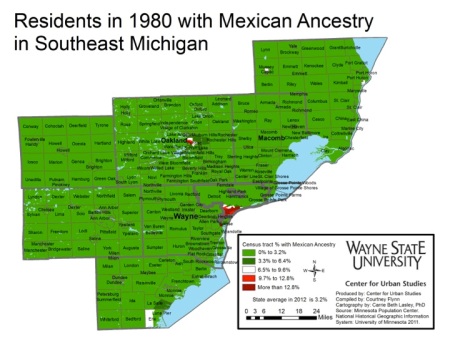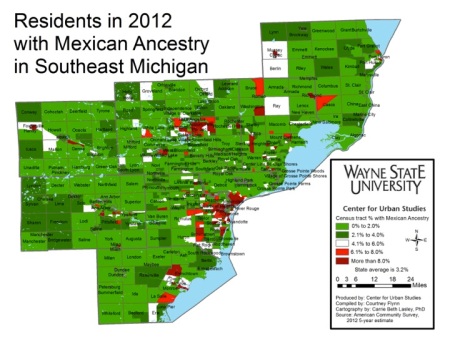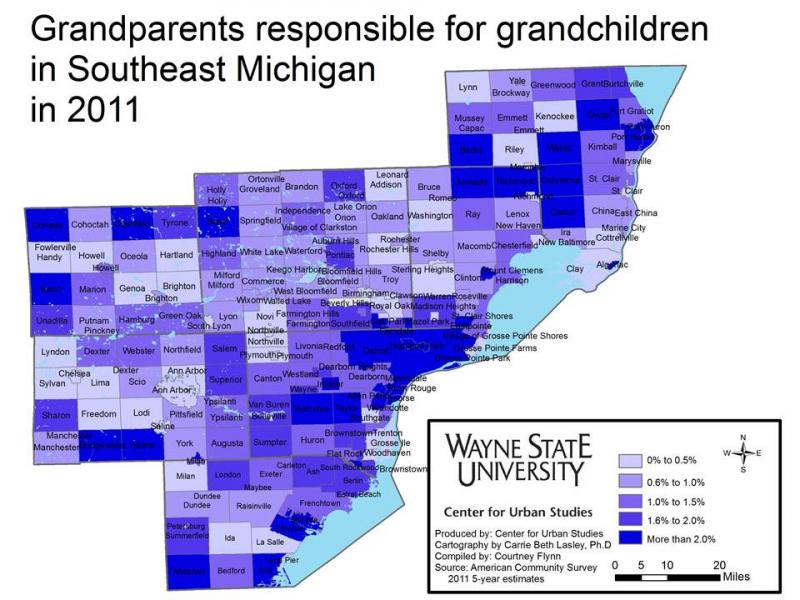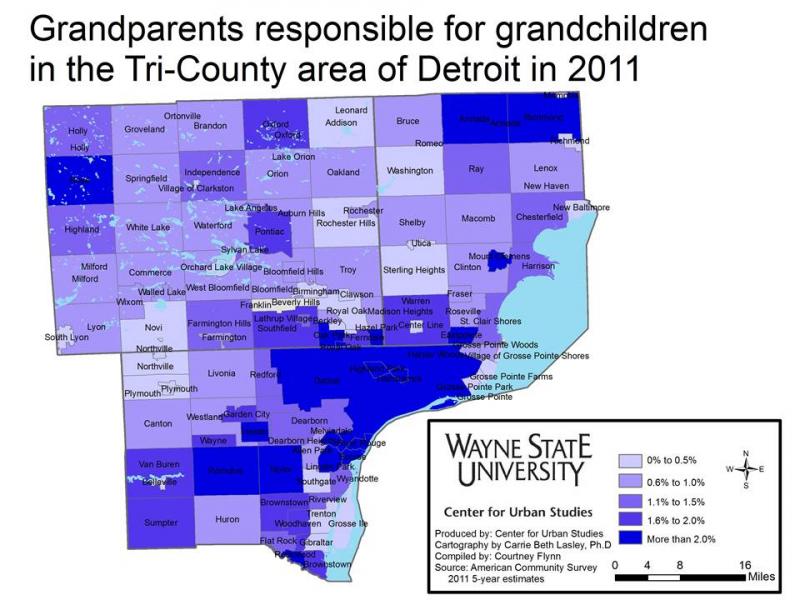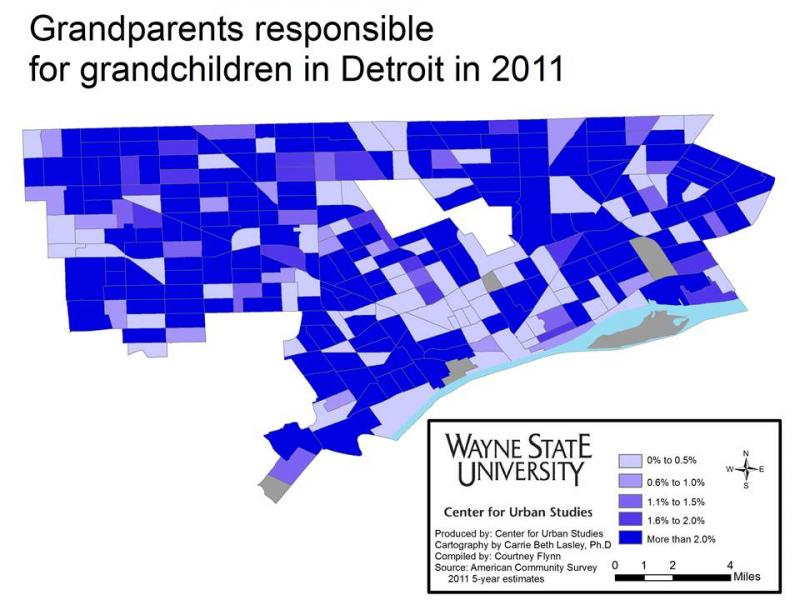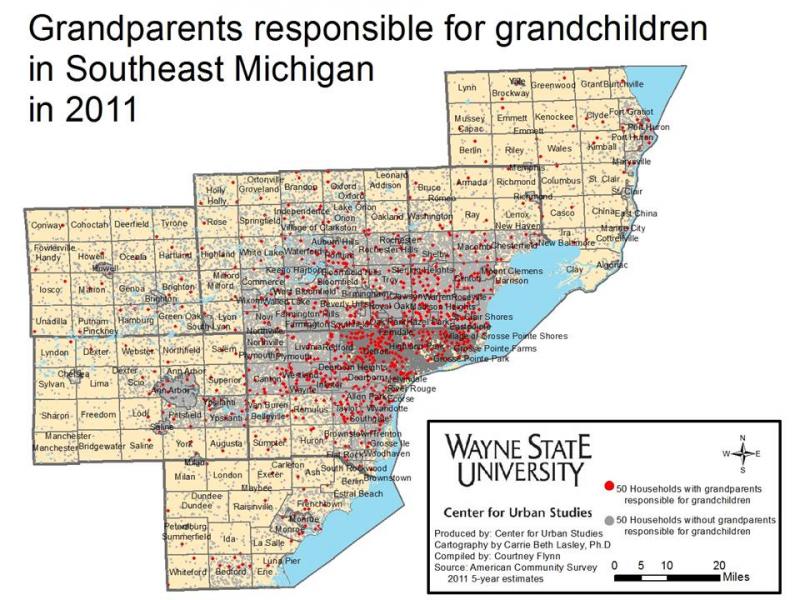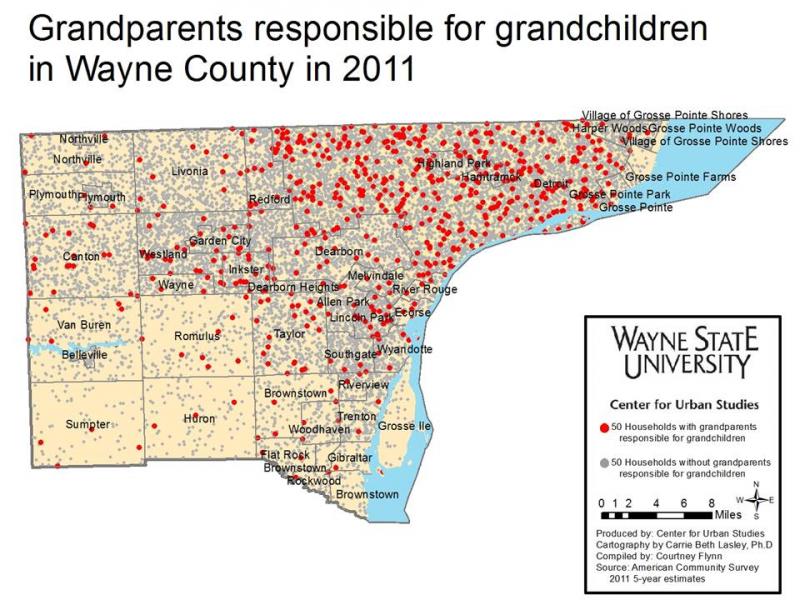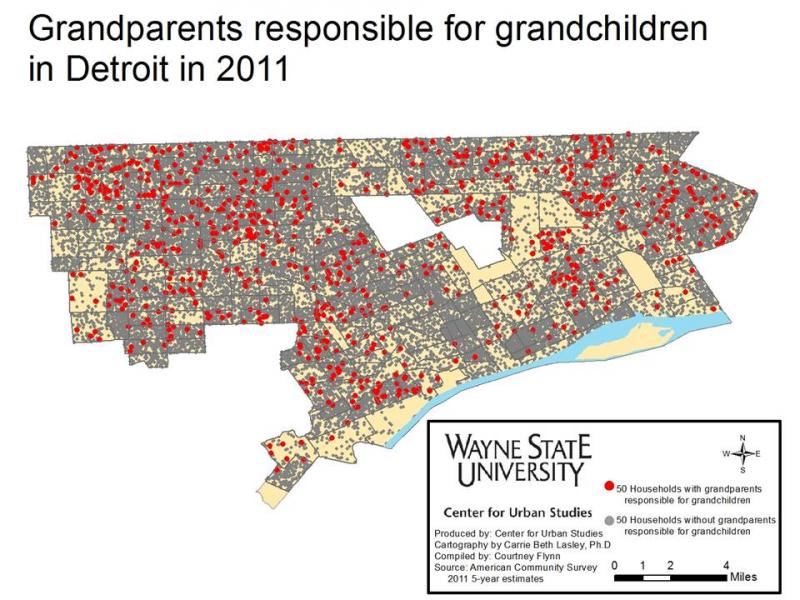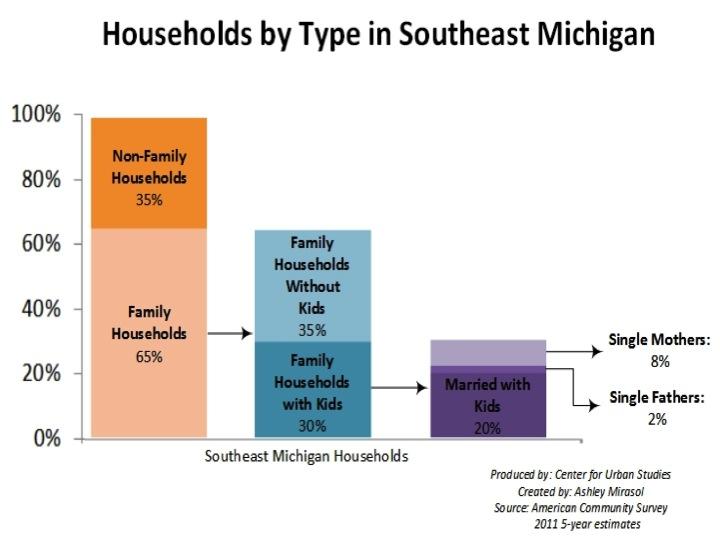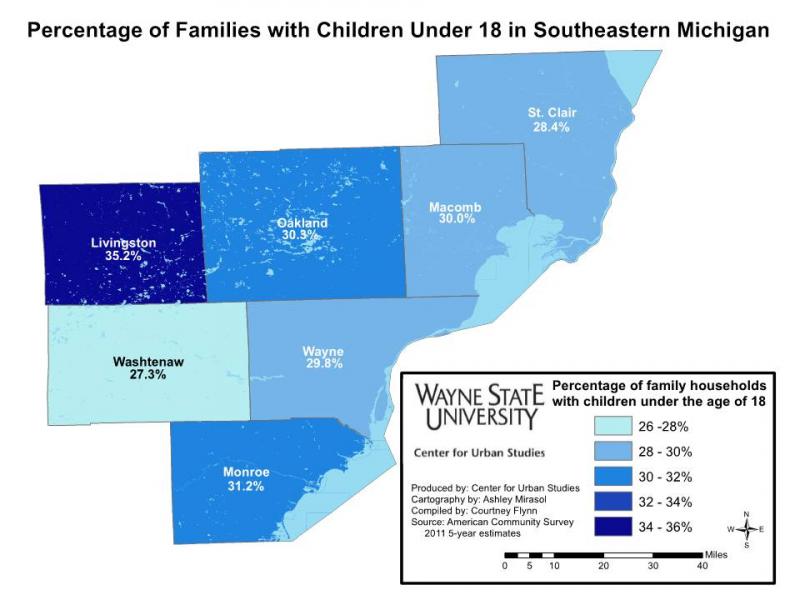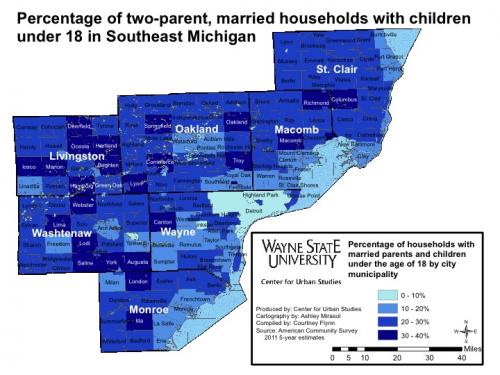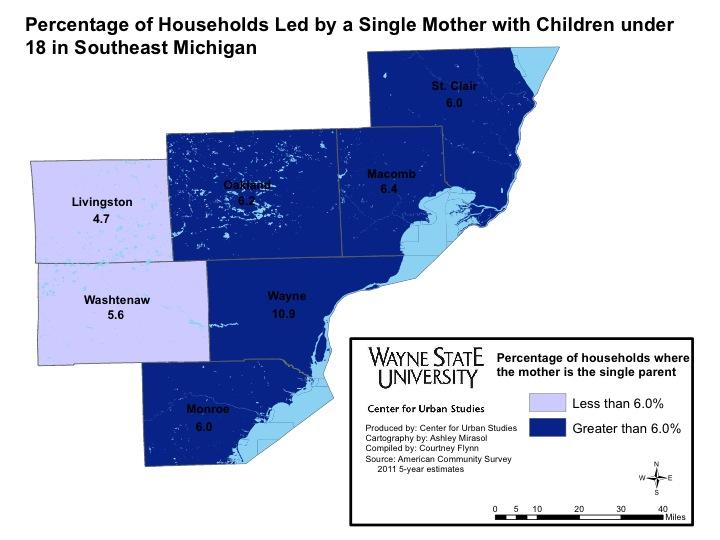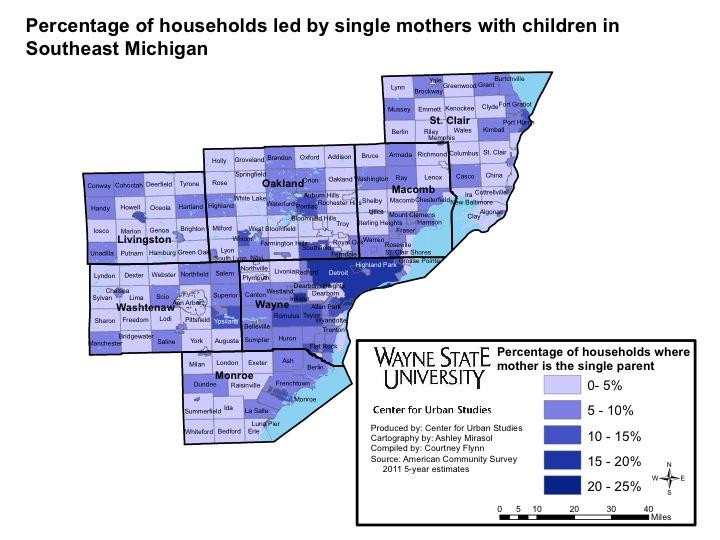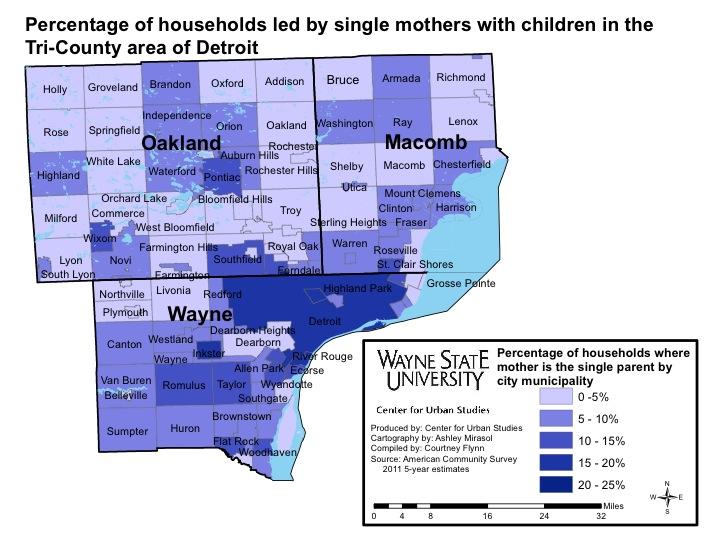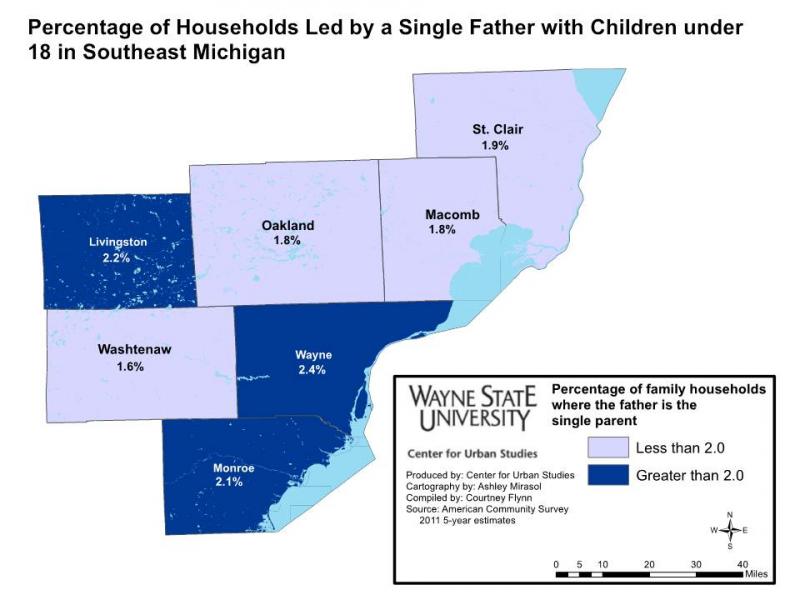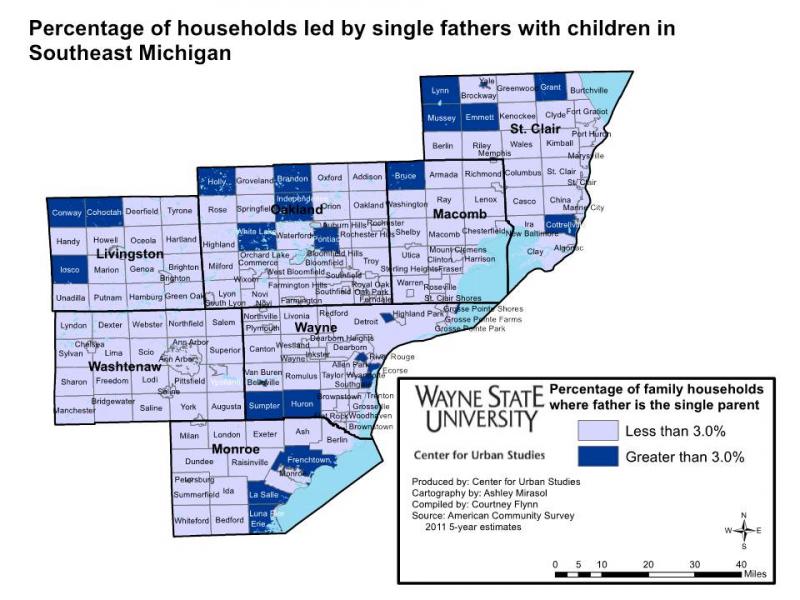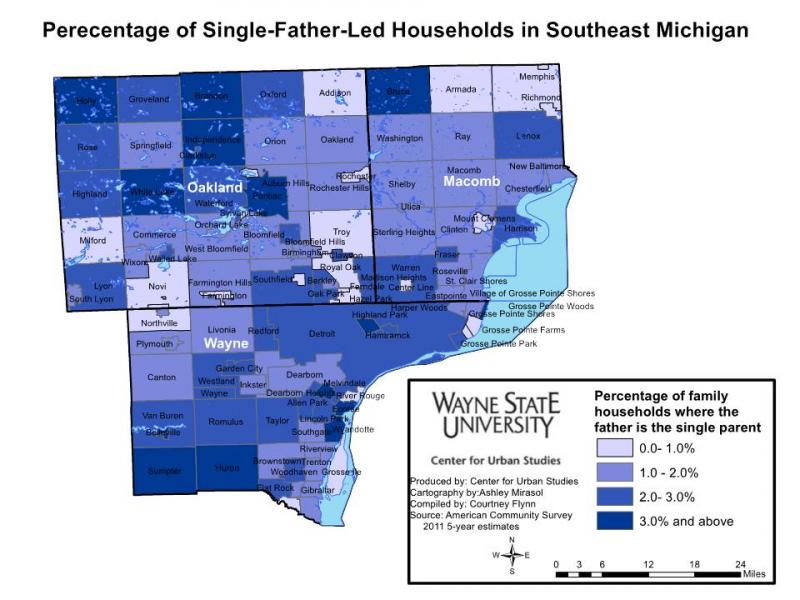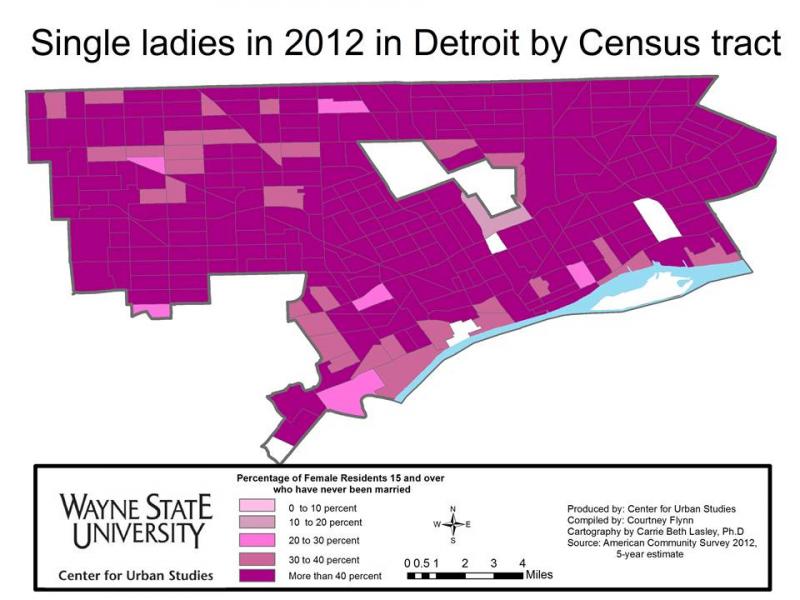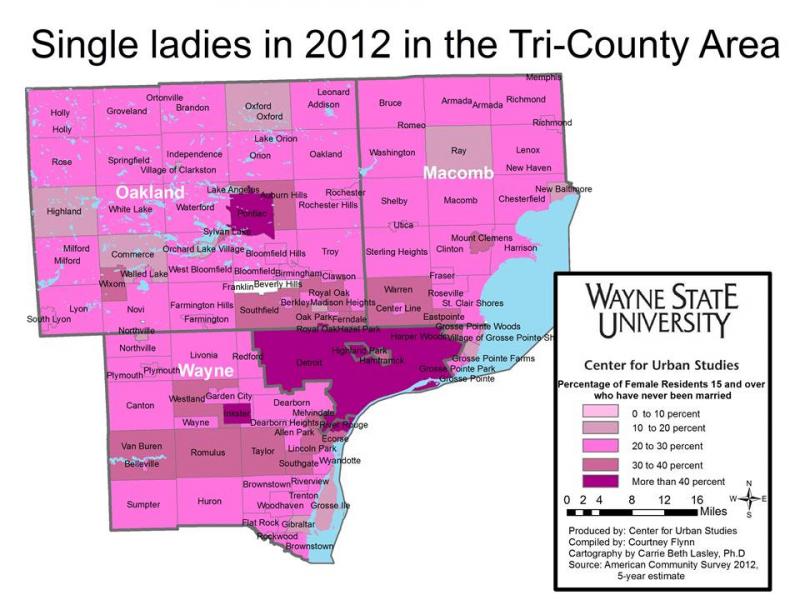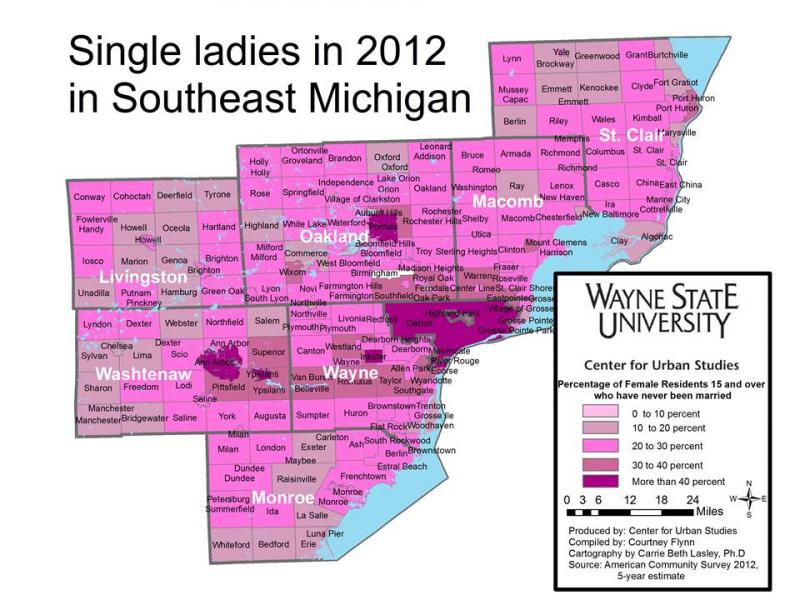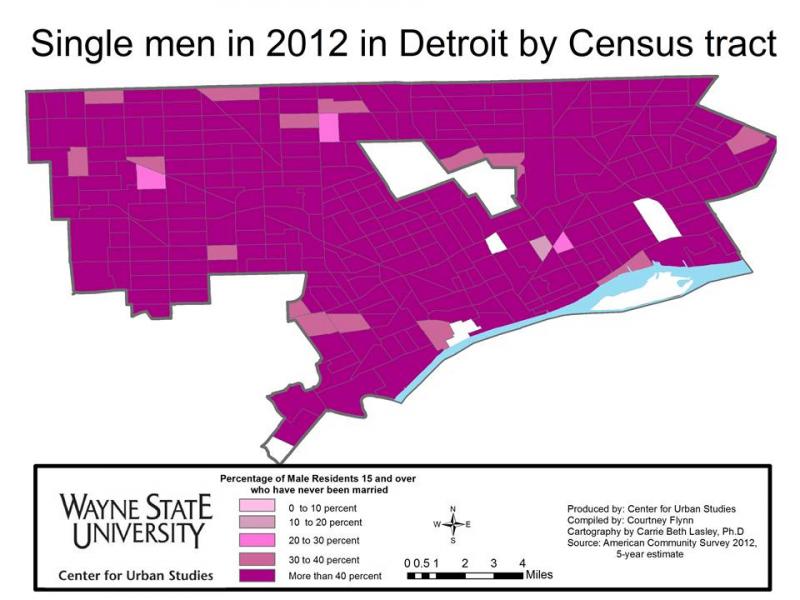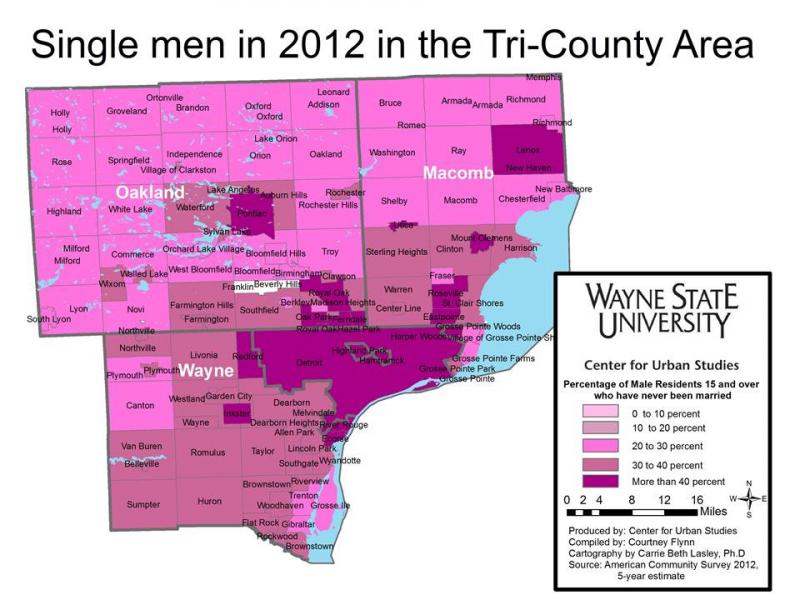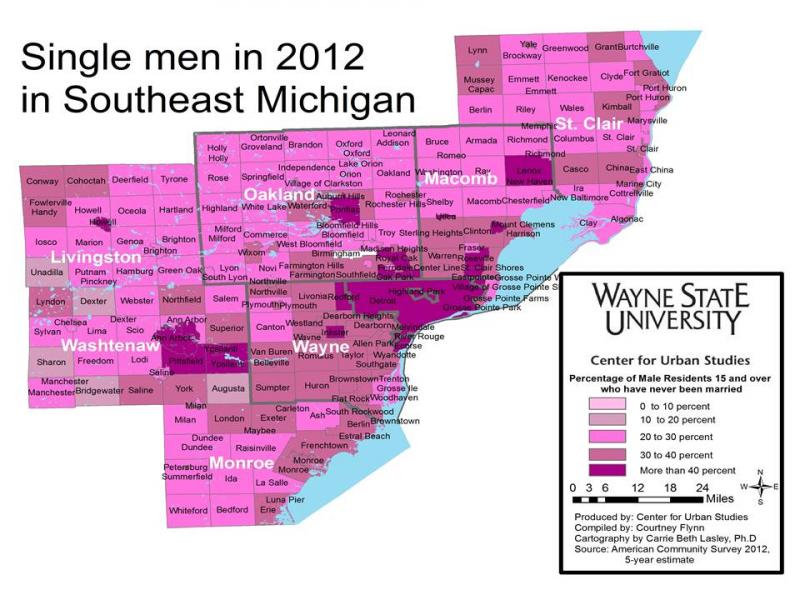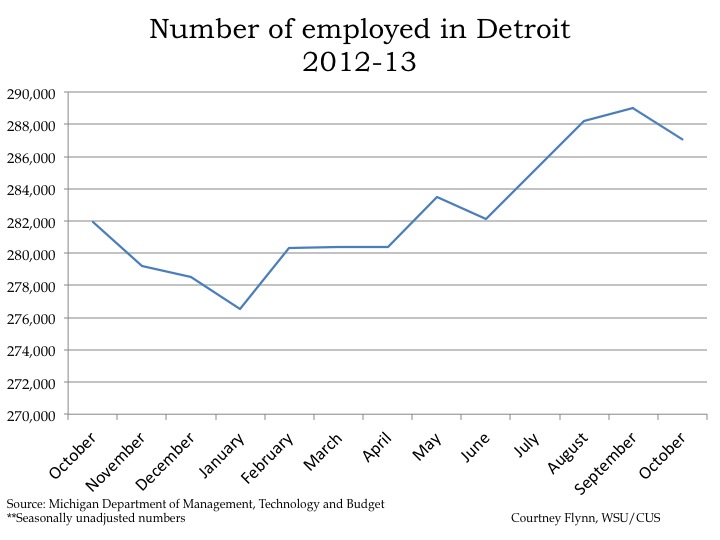As we continue to explore what makes up Southeast Michigan’s population we find that those of Asian descent make up a growing proportion of certain communities’ populations. This post examines both the percentage of residents of Asian descent in each community in the region along with their background.
In this post we see that although some counties have an overall higher percentage of Asian residents than others, there are pockets throughout the region with much higher proportions of Asians than what exists in their county or in the region.
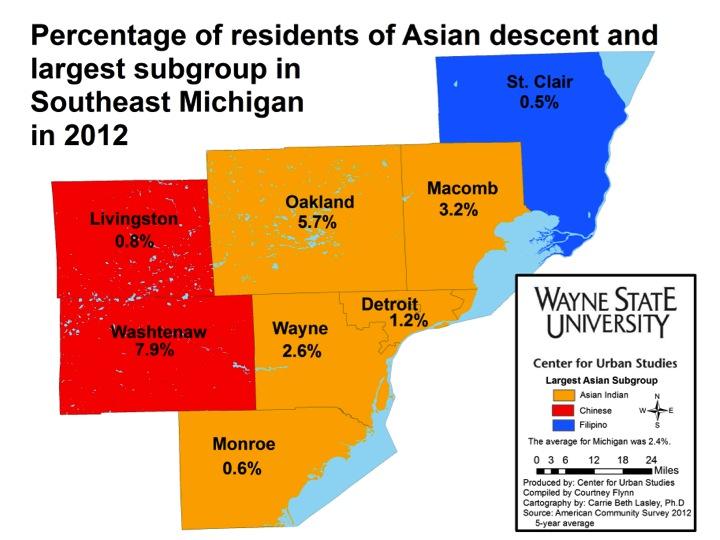
Overall, the average percent of Michigan residents with Asian ancestry was 2.4 percent, according to the 2012 5-year estimates of the American Community Survey. In the seven-county region, three of the seven counties are below this average (Monroe, Livingston and St. Clair counties). The county with the highest population of residents of Asian descent in the region was Washtenaw County; 7.9 percent of its indicated an Asian background.
The map above not only shows what percent of residents are of Asian descent in each county, but also what Asian subgroup is most dominant. For example, in Washtenaw and Livingston counties, those of Chinese descent make up the majority of the Asian population. However, in St. Clair County, those of Filipino descent are the most common subgroup; Asian Indian descent is the most common subgroup for the remaining counties and the City of Detroit (Note that this identity may also be selected by those with Bangladeshi or Pakistani backgrounds who often choose this designation).
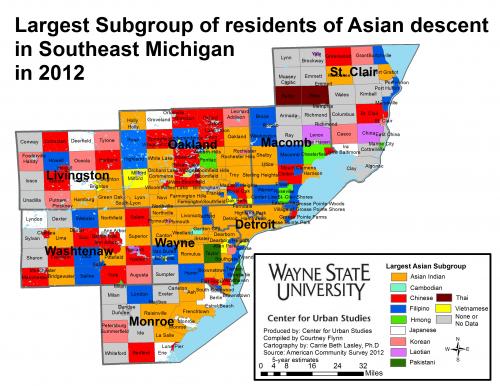
While the first map showed the most dominant Asian subcultures represented in each county, this map shows what cultures are most represented in each community.
As may have been expected by the first map, those of Asian Indian descent were most heavily represented in Wayne, Oakland and Macomb counties. However, in the City of Taylor and on Grosse Ile, located in Wayne County, those of Pakistani descent were the most represented. In Pontiac in Oakland County, those of Hmong descent were the most represented Asian subgroup.
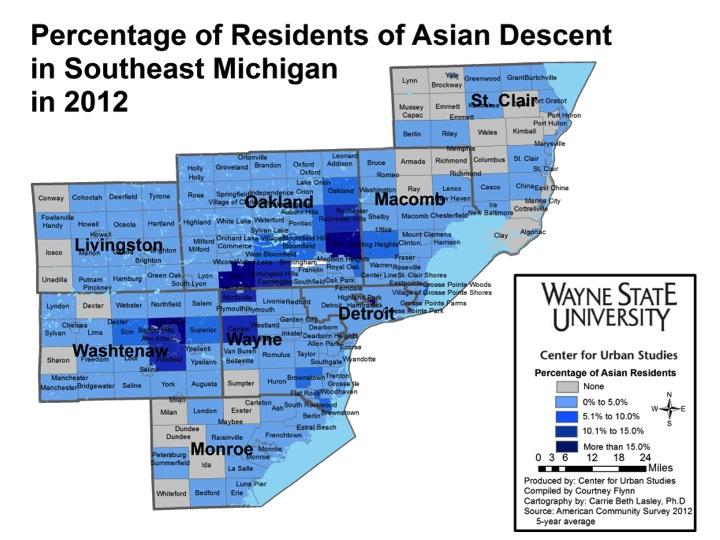
The previous maps showcased what Asian subgroups were represented throughout the region and this one shows the percentage of residents of Asian descent in each community. At 19.6 percent, the City of Troy in Oakland County had the highest percent of residents with Asian descent of all the communities in the region. The majority (48.4 percent of Asians) are of an Asian Indian background, followed by Chinese (25.2%) and Koreans (9.3%). Also in Oakland County, the City of Novi has a high percentage of residents of Asian descent; this percentage is 16.5.
The highest proportion of Asian residents in Wayne County was in Hamtramck at 18.9% (second in the region, behind Troy). Residents identified Asian Indian (1,882) as the predominant subculture, ahead of Bangladeshi (1,664), however, the country of birth for Hamtramck residents during the same period was listed as India for 43 residents, and Bangladesh for 2,928, suggesting that many Bangladeshis may have identified as Asian Indian.
In Washtenaw County, Ann Arbor Township has the highest percent of residents of Asian descent. This percentage is 16.1, majority of whom are Japanese. The city of Ann Arbor’s population is at 14.6 percent, majority of whom are Chinese.
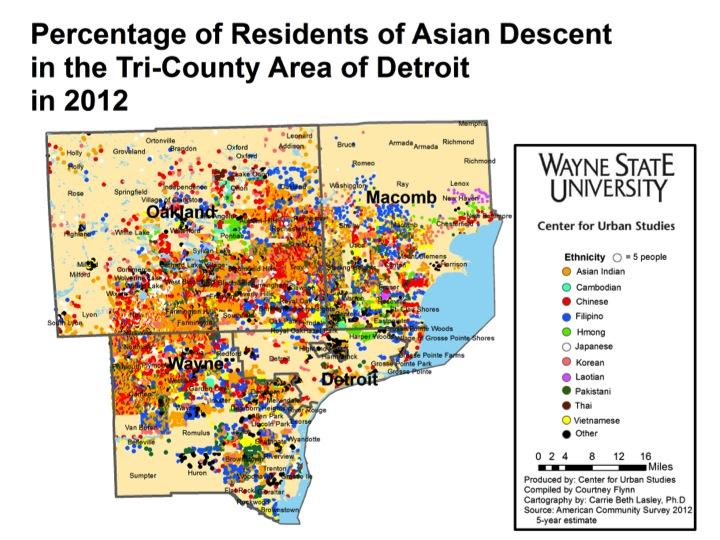
The map above is a dot-density map of Asian subgroups, showing where residents live, instead of the percentage of the population. From this map you can see that while there may be a smaller percentage of the population that is Asian in some areas, the actual number of residents of Asian descent in highly populated areas may be large. There is a large number of Asian residents forming a semi-circle around the north and west of the City of Detroit, and some sub-group patterns arise. Hmong Asians live primarily in Pontiac and along the Macomb and Wayne county borders. Pakistanis form a cohesive presence between the airport and the river. Laotians dominate the New Haven area.
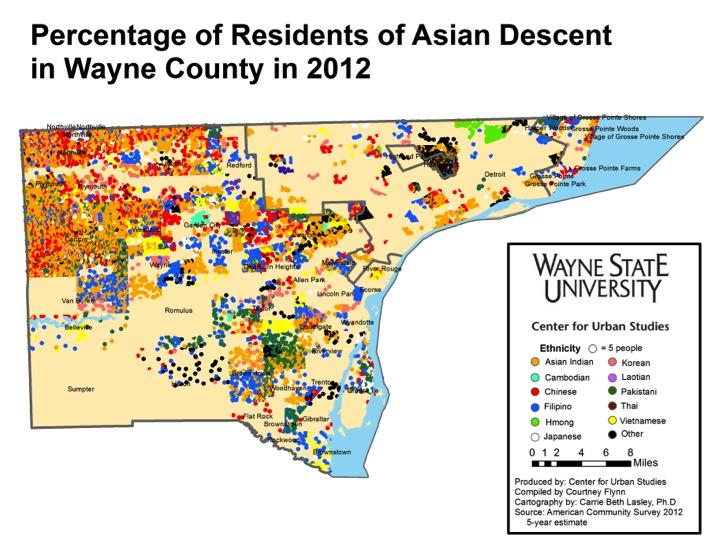
Within Wayne County, in addition to the Pakistanis, Cambodians are prevalent in Garden City and Hmong in Northeast Detroit. The large numbers of Asians in Northwest Wayne demonstrates an eclectic mix of cultures, and is more apparent when viewed with dot-density rather than percentage.
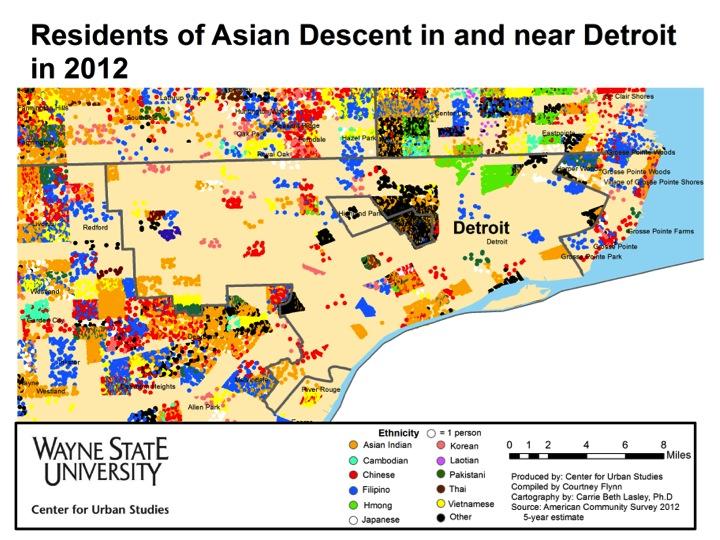
In the Detroit area, the expanse of the Hmong is apparent up the Gratiot Avenue corridor into Macomb beyond Detroit. Various ethnicities have chosen small areas of Detroit to call home, including Filipinos near and in Hazel park, Chinese in west Detroit neighborhoods, Thais near Redford, Pakistanis and Japanese on the East side.
